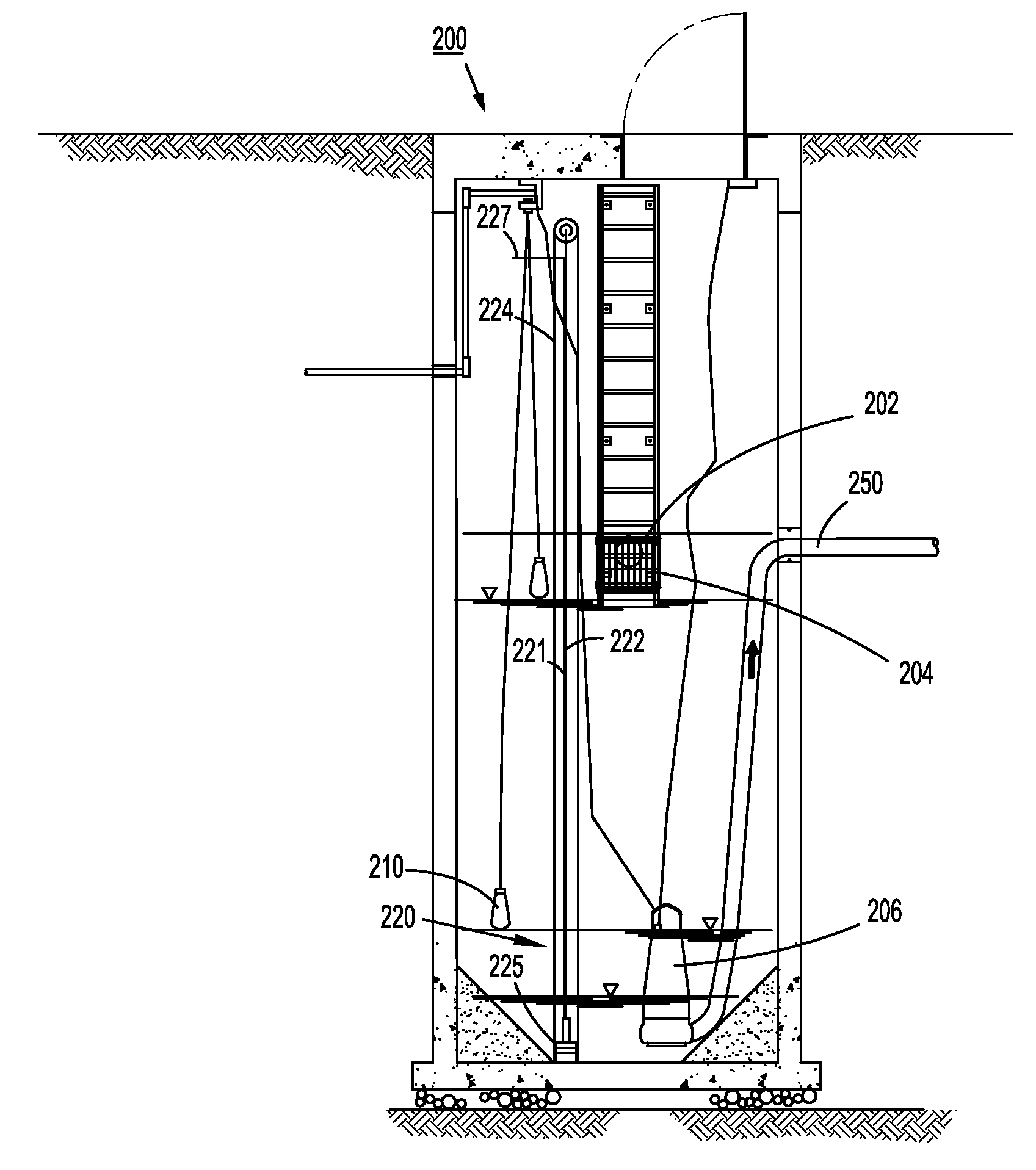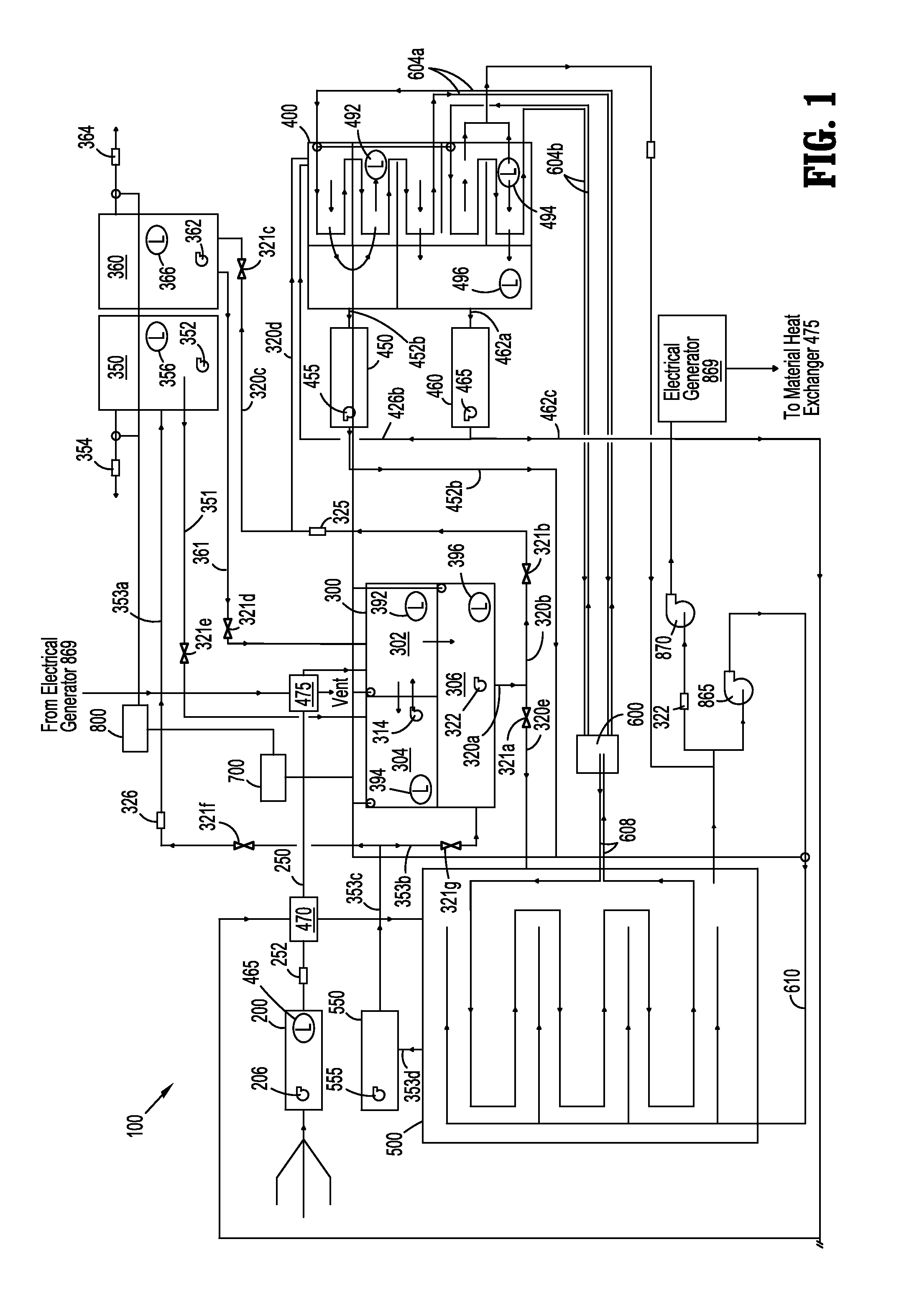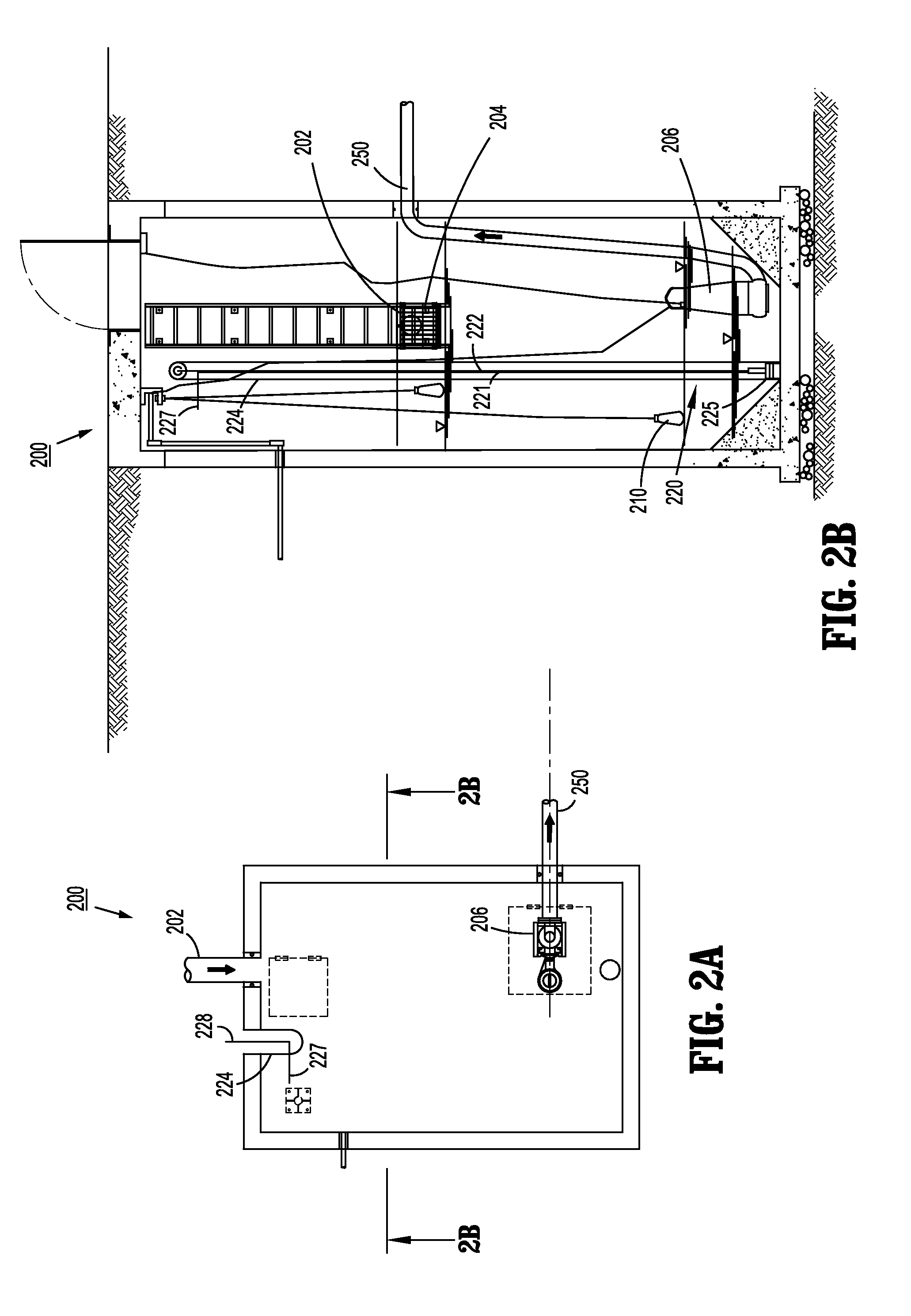Systems and methods for anaerobic digestion of biomaterials
a biomaterials and anaerobic digestion technology, applied in the field of anaerobic digestion systems, can solve the problem of limiting the rate of hydrolysis of complex molecules
- Summary
- Abstract
- Description
- Claims
- Application Information
AI Technical Summary
Benefits of technology
Problems solved by technology
Method used
Image
Examples
Embodiment Construction
[0089]Particular embodiments of the present disclosure are described hereinbelow with reference to the accompanying drawings. In the following description, well-known functions or constructions, such as piping runs, valves, pumps, fans, and the like are not described in detail to avoid obscuring the present disclosure in unnecessary detail. Further, the process according to the present disclosure may optionally be performed as a serial, continuous, or batch process, and combinations thereof (e.g., sequential or continuous batch processing). The following description and figures illustrate non-limiting embodiments of an anaerobic digestion system that may comprise any number of clarifiers, batch reactors, and digesters, among other aspects.
[0090]FIG. 1 illustrates an embodiment of an anaerobic digestion system 100 of the present disclosure. As shown in FIG. 1, the system 100 may include an influent collection tank 200, a clarifier 300, a batch reactor 400, and a digester 500. As show...
PUM
| Property | Measurement | Unit |
|---|---|---|
| oxidation-reduction potential | aaaaa | aaaaa |
| oxidation-reduction potential | aaaaa | aaaaa |
| temperatures | aaaaa | aaaaa |
Abstract
Description
Claims
Application Information
 Login to View More
Login to View More - R&D
- Intellectual Property
- Life Sciences
- Materials
- Tech Scout
- Unparalleled Data Quality
- Higher Quality Content
- 60% Fewer Hallucinations
Browse by: Latest US Patents, China's latest patents, Technical Efficacy Thesaurus, Application Domain, Technology Topic, Popular Technical Reports.
© 2025 PatSnap. All rights reserved.Legal|Privacy policy|Modern Slavery Act Transparency Statement|Sitemap|About US| Contact US: help@patsnap.com



